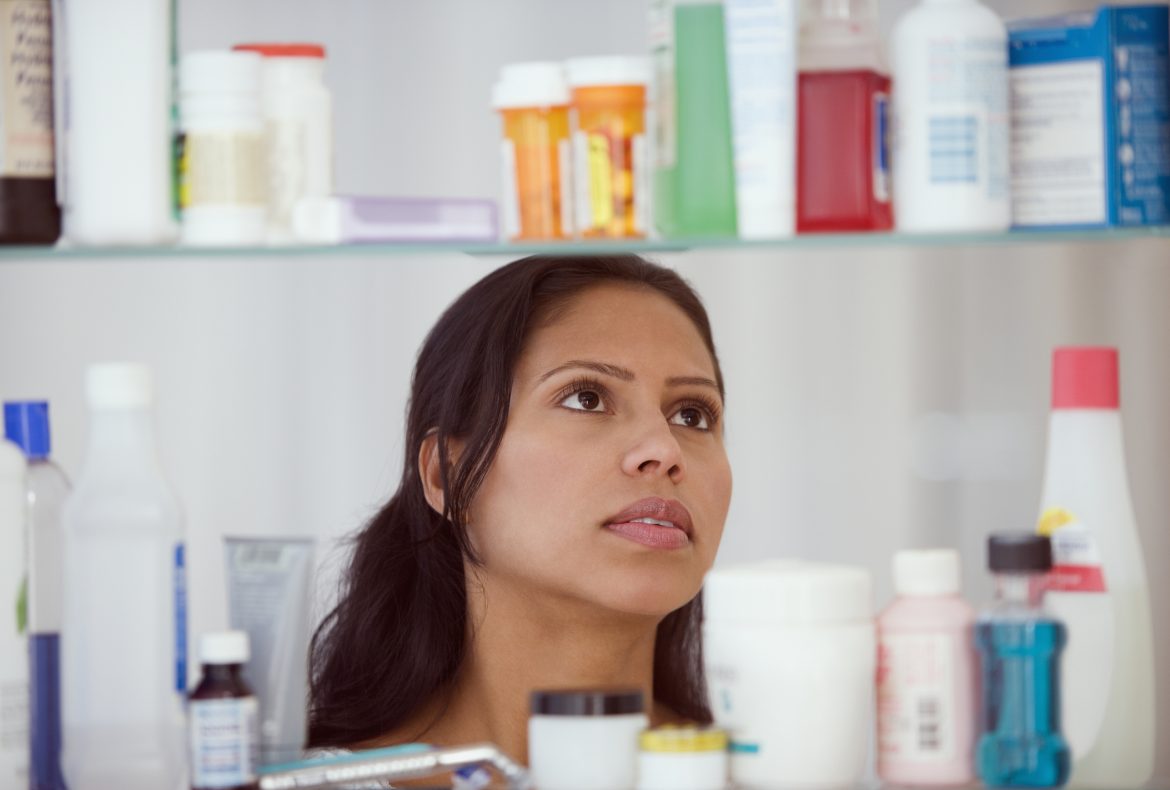A well-stocked medicine cabinet is a home essential. From easing a headache to treating minor cuts or scrapes, having the right over-the-counter (OTC) supplies on hand can save time and provide peace of mind when life’s little health hiccups occur.
ALSO READ: 10 Unexpected signs of iron deficiency anaemia in women
Here’s what every household should keep in their medicine cabinet — and why it’s just as important to regularly clear out and update what’s inside.
The must-haves for your medicine cabinet
1. Pain and fever relief
It’s wise to keep paracetamol and ibuprofen tablets or syrup for relieving mild to moderate pain, headaches, toothaches, and fever. These medications are suitable for both adults and children (but always check the appropriate dosage).
2. Antihistamines
An oral antihistamine is useful for managing allergic reactions, hay fever, or insect bites. An anti-itch cream or gel can help soothe itchy skin caused by mild allergies or stings.
3. Antiseptic solutions and ointments
An antiseptic liquid or cream is essential for cleaning minor wounds, cuts, and grazes to prevent infection. Antiseptic wipes can also come in handy, particularly when you’re on the go.
4. Plasters and dressings
Keep a selection of adhesive plasters in various sizes, sterile gauze pads, and bandages for covering and protecting wounds.
5. Tweezers and small scissors
Useful for removing splinters, cutting dressings, or trimming medical tape.
6. Thermometer
A digital thermometer allows you to check for fever accurately, which can be especially helpful when children are unwell.
7. Rehydration salts
Oral rehydration sachets are important to have in case of diarrhoea or vomiting, helping to restore essential fluids and electrolytes.
8. Cough and cold remedies
Basic remedies like lozenges for a sore throat, saline nasal spray, or a decongestant can provide relief for common cold symptoms.
9. Burn care
A small tube of burn gel or a burn dressing is a smart addition for treating minor burns before seeking medical advice if necessary.
10. Eye drops
Lubricating or saline eye drops can help rinse out irritants or relieve dry, irritated eyes.
11. Gloves and hand sanitiser
Keeping disposable gloves and alcohol-based hand sanitiser ensures good hygiene when treating wounds.
Why and how often should you check your medicine cabinet?
Medicines and first-aid supplies don’t last forever. Expired products may lose their effectiveness or, in some cases, become harmful. That’s why it’s important to review your medicine cabinet’s contents every six to twelve months.
Here’s what to look out for:
-
Check expiry dates: Dispose of anything that’s expired — safely and responsibly. Do not flush medicines down the toilet or sink; take them to your local pharmacy for safe disposal.
-
Inspect packaging: Discard any items with damaged packaging, faded labels, or altered appearance (such as discoloured tablets or crumbling pills).
-
Restock what’s missing: Replace items you’ve used so that you’re always prepared.
Store your medicine cabinet in a cool, dry place out of reach of children and pets — a high cupboard rather than a bathroom (where moisture can damage products) is ideal. Label everything clearly and keep a simple first-aid manual nearby for guidance during emergencies.
A little preparation goes a long way in keeping your household ready for life’s everyday health niggles.
ALSO SEE:
Feature Image: Getty

